Ready to grow a garden that’s both fun and full of veggies? Learn how to turn your yard into a colorful, productive space.
Use tall planters to save room or add DIY signs to make your garden unique. Every idea helps you grow more food and enjoy your outdoor time.
Need simple ways to improve your garden? Try planting herbs next to tomatoes for natural pest control.
Add bright flowers to attract butterflies and bees. These easy tips help you grow healthy plants and make gardening exciting for kids and adults.
Vertical Gardens: Maximizing Space and Style
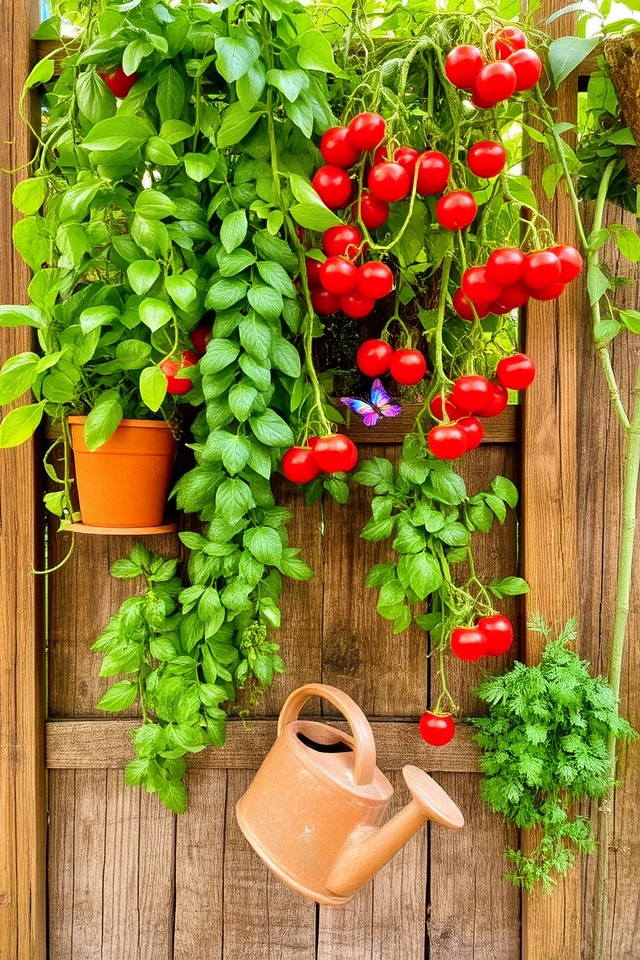
Vertical gardens are an innovative solution for maximizing limited gardening space while adding a touch of style to your outdoor or indoor areas. By utilizing vertical structures such as trellises, wall planters, or hanging pots, you can grow a variety of vegetables, herbs, and flowers upwards instead of outwards. This not only allows for efficient use of space but also enhances air circulation and sunlight exposure, promoting healthier plants. Perfect for small yards, balconies, or patios, vertical gardens bring both functionality and aesthetic appeal.
Raised Garden Beds: A Beginner’s Best Friend
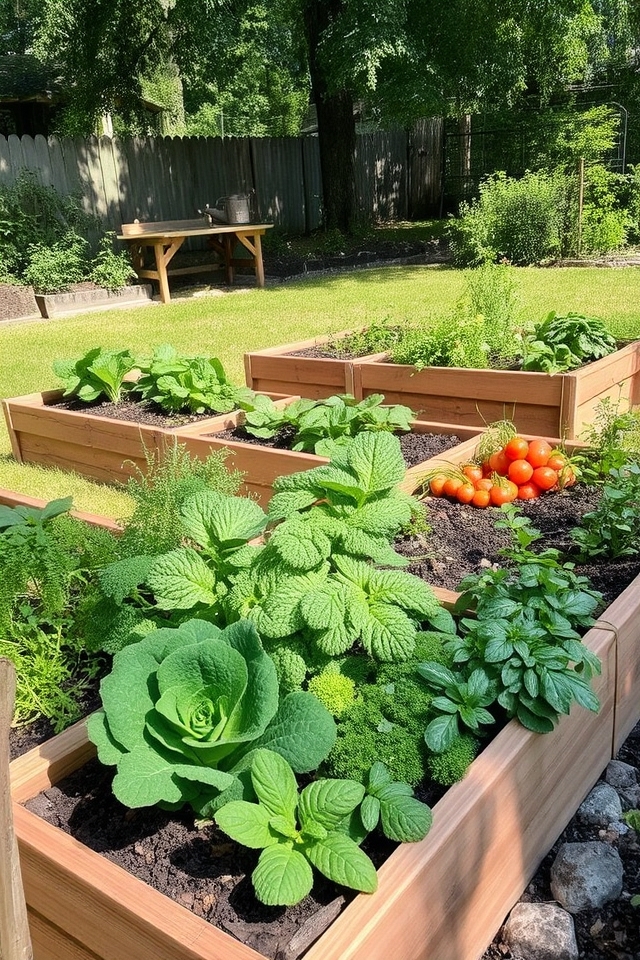
Raised garden beds are the perfect solution for beginner gardeners looking to create a thriving vegetable garden. They offer improved soil drainage, better pest control, and easier accessibility, making gardening more enjoyable and manageable. By elevating the planting area, raised beds reduce the strain on your back and knees, allowing you to focus on nurturing your plants. Additionally, they provide a defined space for planting, which can help keep your garden organized and visually appealing.
Container Gardening: Perfect for Limited Spaces
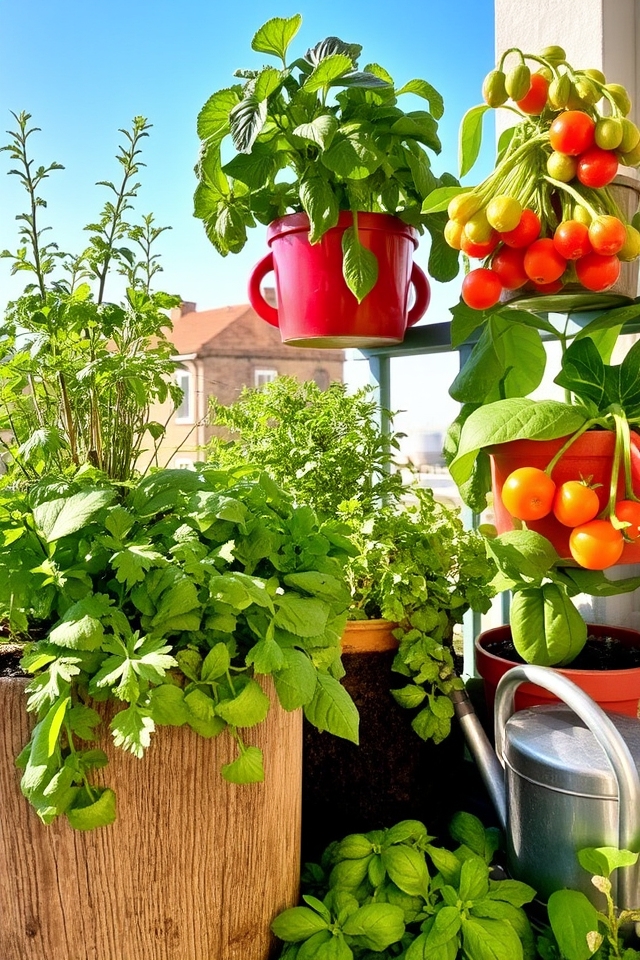
Container gardening is an excellent solution for those with limited space, allowing you to grow a vibrant vegetable garden even on balconies, patios, or small yards. Utilizing pots, window boxes, and hanging containers, you can maximize your planting area while adding beauty to your surroundings. Choose dwarf varieties of vegetables and herbs to guarantee they thrive in confined spaces, and don’t forget to incorporate good drainage and quality soil for ideal growth. Container gardening offers flexibility and creativity, making it a popular choice for urban gardeners.
Herb Spiral: A Functional and Beautiful Design
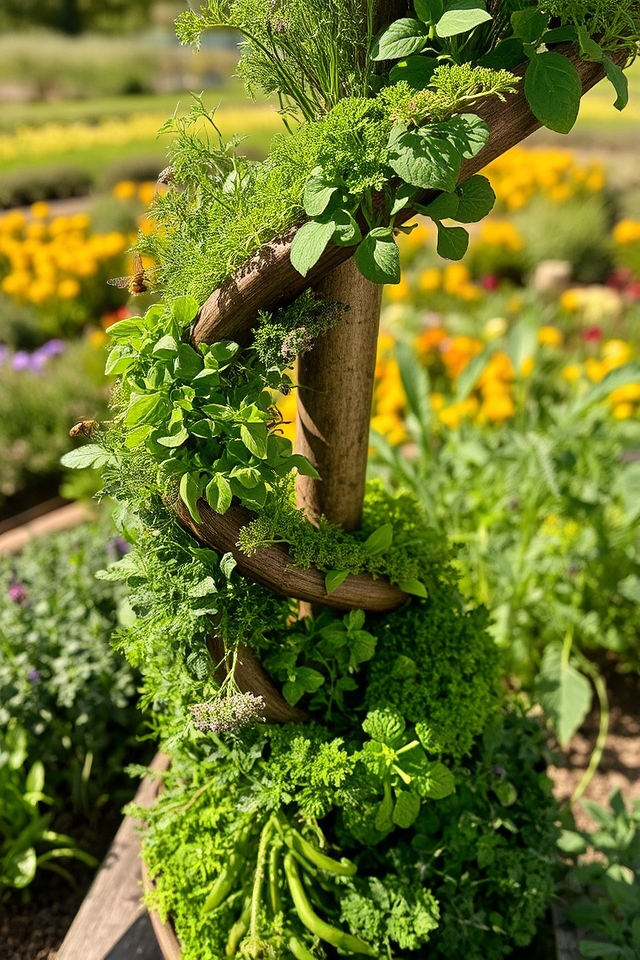
An herb spiral is a creative and effective way to grow a variety of herbs in a compact space. This vertical garden design features a spiral shape that allows for varying levels of sunlight and moisture, catering to different herb needs. The upward spiral creates visual interest and makes harvesting herbs easy and accessible. Plus, the design promotes better drainage and encourages biodiversity, attracting beneficial insects and enhancing the overall health of your garden.
Square Foot Gardening: Efficient Planting Techniques

Square Foot Gardening is an innovative planting technique that maximizes space by dividing garden beds into square-foot sections, allowing for a diverse array of plants to flourish in a compact area. This method encourages efficient use of soil and resources, making it perfect for urban gardens or small backyards. Gardeners can grow a variety of vegetables, herbs, and flowers in a structured layout, promoting organization and ease of maintenance while enhancing yield and sustainability.
Keyhole Garden: Sustainable and Productive
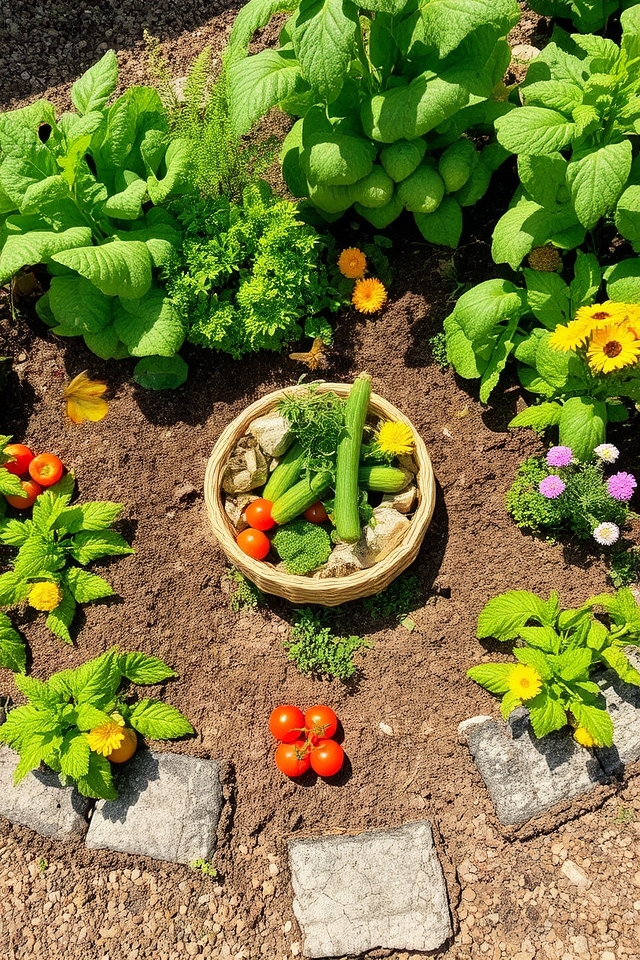
A keyhole garden is an innovative and sustainable gardening method that maximizes space and efficiency. Shaped like a keyhole, it features a central composting basket that nourishes the surrounding soil as it breaks down organic material. This design allows for effective water retention and makes gardening accessible from all sides, promoting a productive growing area. Ideal for small spaces, keyhole gardens can yield a variety of vegetables while minimizing the need for excessive watering and fertilizers.
Companions in the Garden: Planting for Success
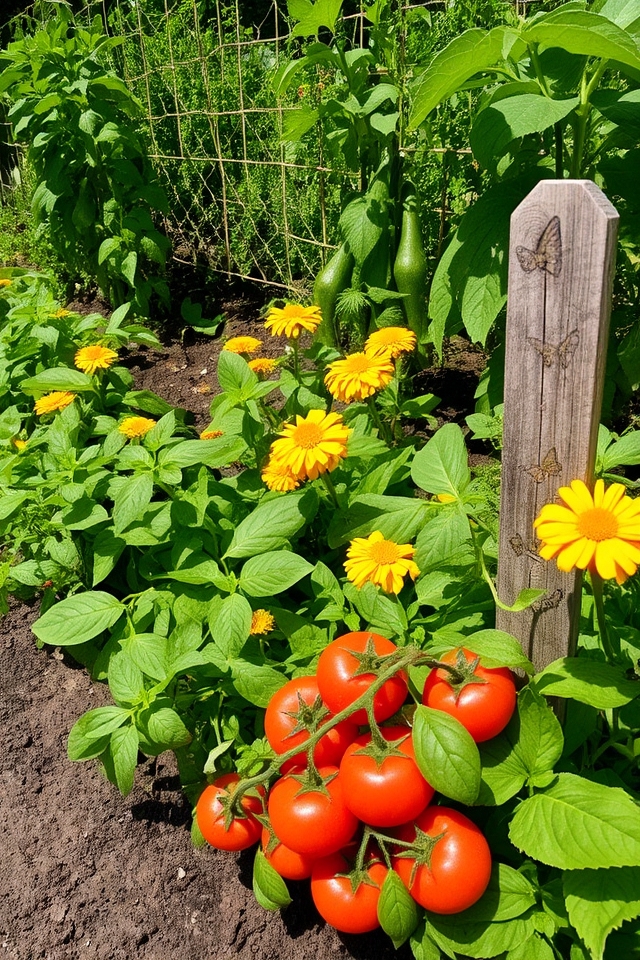
Companion planting is a technique that involves grouping certain plants together to enhance growth, repel pests, and improve flavor. For instance, pairing tomatoes with basil can boost their flavor while helping to deter harmful insects. Similarly, marigolds are often planted alongside vegetables to repel nematodes and other pests. Understanding these relationships helps create a thriving ecosystem in your vegetable garden, ensuring healthier plants and a bountiful harvest. Embrace the synergy and watch your garden flourish!
Aesthetic Pathways: Creating Walkable Paradise
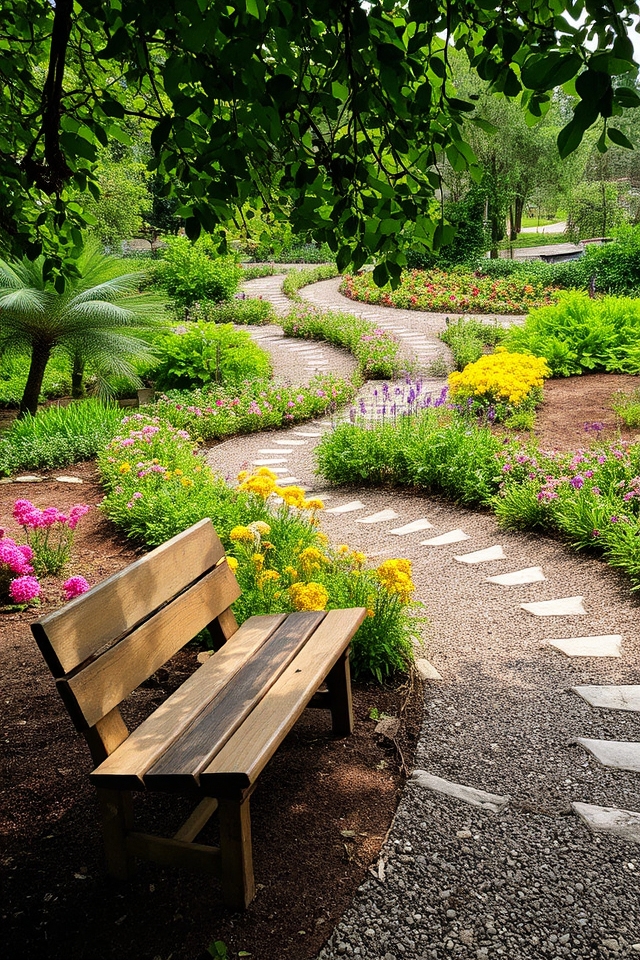
Aesthetic pathways are essential in shaping a vegetable garden into a walkable paradise. By incorporating materials like gravel, wood chips, or stone pavers, you can create a visually appealing and functional route through your garden. Consider adding curved paths to invite exploration or raised borders filled with colorful flowers for added charm. Not only do these pathways enhance the garden’s beauty, but they also provide easy access for maintenance and harvesting, making your gardening experience enjoyable and efficient.
Edible Landscapes: Blending Beauty With Function

Edible landscapes seamlessly combine aesthetics with practicality, transforming traditional gardens into visually stunning yet functional spaces. By incorporating colorful fruits, vibrant vegetables, and fragrant herbs into the design, you can create a stunning visual display while also producing fresh, homegrown food. The use of ornamental varieties, companion planting, and layered planting techniques enhances both beauty and biodiversity, resulting in a garden that is as pleasing to the eye as it is nourishing to the body.
Pollinator Gardens: Attracting Beneficial Bees and Butterflies
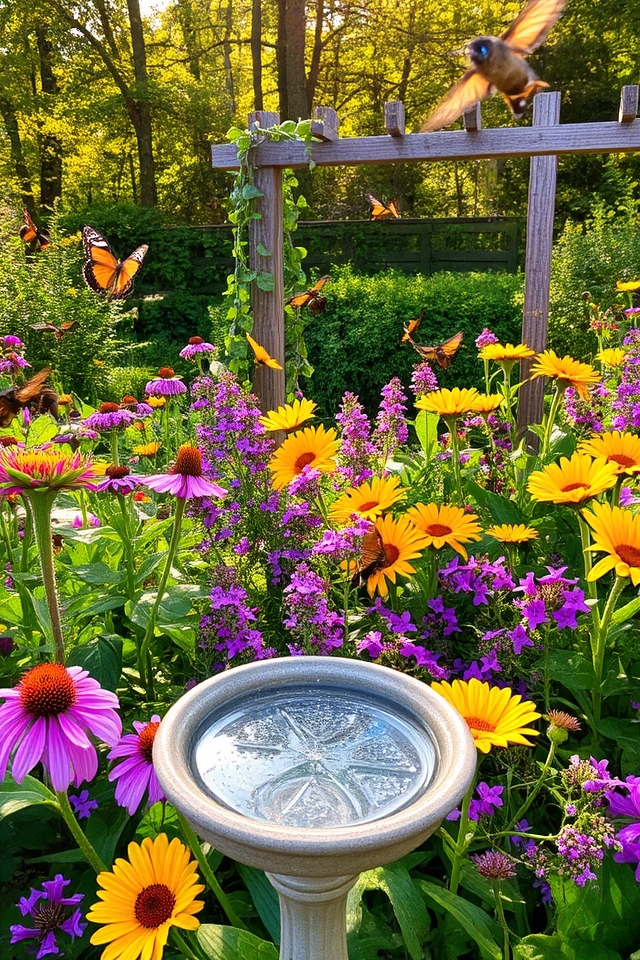
Creating a pollinator garden is a fantastic way to attract beneficial bees and butterflies while enhancing the beauty of your vegetable garden. Focus on incorporating a diverse range of native flowers, herbs, and plants that bloom at various times throughout the growing season. This not only provides essential food for pollinators but also fosters biodiversity. Including features like water sources and shelter can further encourage these important visitors, leading to more fruitful vegetable cultivation and a vibrant ecosystem.
Garden Trellises: Stylish Support for Climbing Plants
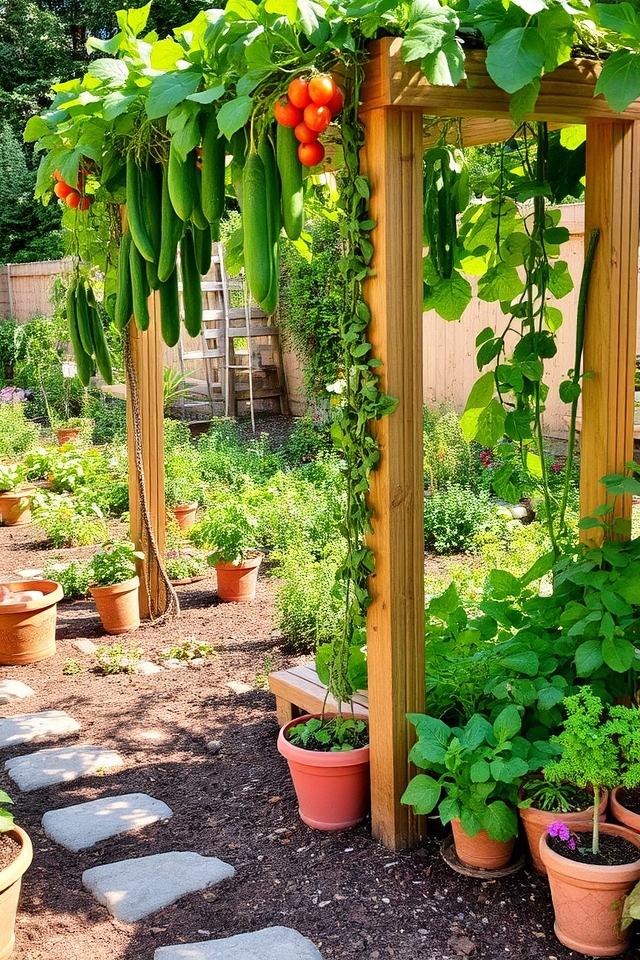
Garden trellises are a fantastic addition to any vegetable garden, providing both style and support for climbing plants. These structures come in various designs, from rustic wooden frames to elegant metal arches, enhancing the garden’s aesthetic while promoting healthy plant growth. By training cucumbers, beans, and peas onto trellises, you maximize space, improve air circulation, and prevent disease. Plus, they create a charming vertical element that can transform your garden into a lush, green paradise.
Themed Gardens: Choosing a Cohesive Concept
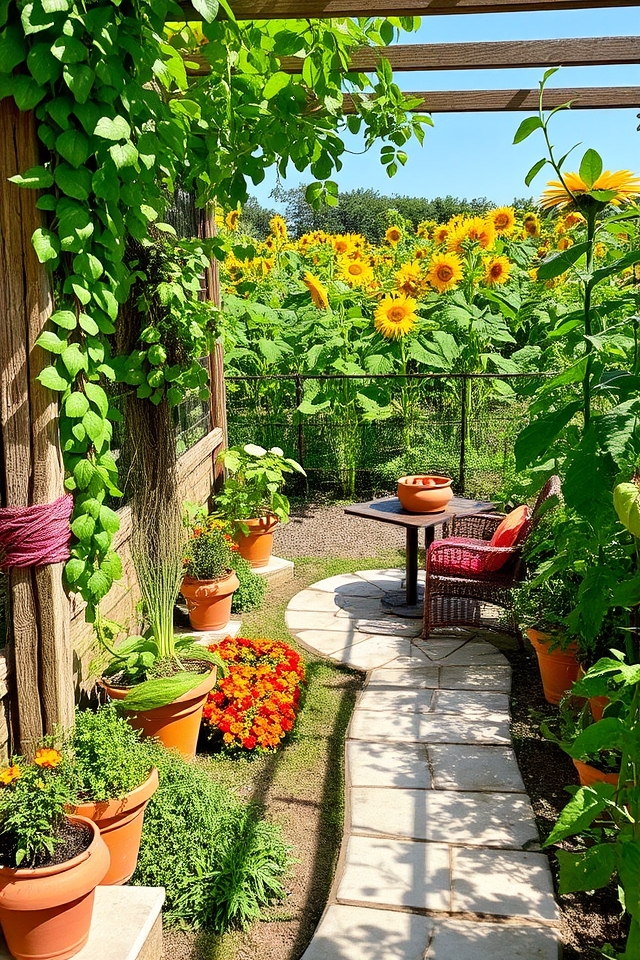
Themed gardens provide a unique and cohesive way to organize your vegetable space, transforming it into a visually appealing sanctuary. When choosing a theme, consider concepts such as Mediterranean, tropical, or even a color palette focused on vibrant reds and greens. Incorporate companion planting and varied textures to enhance the theme. A cohesive concept not only boosts aesthetic appeal but also improves functionality and crop yield, making your gardening experience both enjoyable and productive.
Multi-Tiered Gardens: Harnessing Verticality
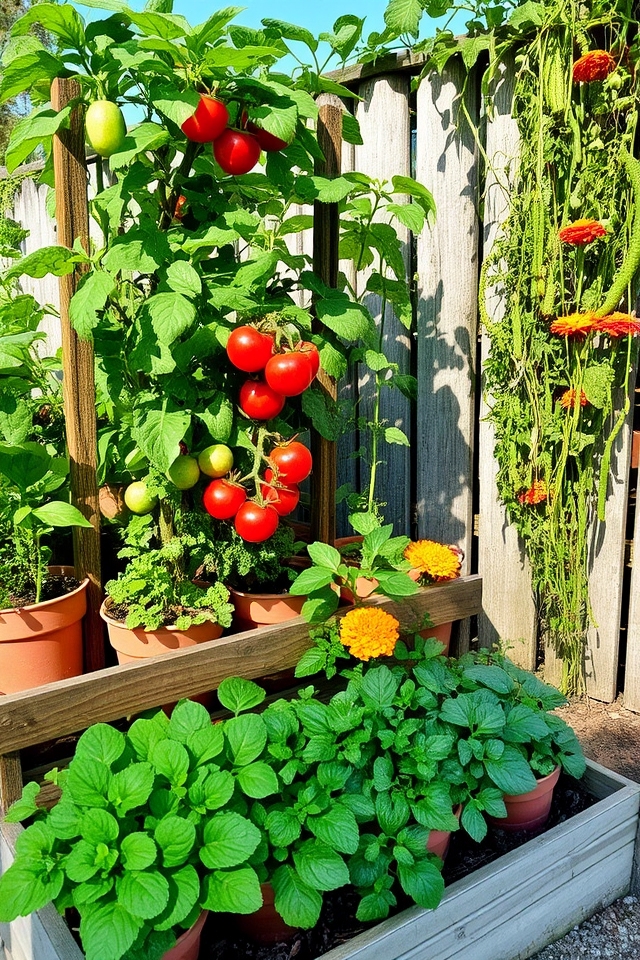
Multi-tiered gardens are an innovative way to maximize space while adding a striking visual element to your vegetable garden. By utilizing vertical structures such as tiered planters, shelving, or wall-mounted racks, you can grow a variety of vegetables in a compact area. This method not only increases yield but also enhances accessibility and airflow, reducing the risk of pests and diseases. Embrace the beauty of verticality and transform your garden into a lush, productive haven.
Seasonal Planting: Enjoying Fresh Produce Year-Round

Seasonal planting allows gardeners to enjoy a continuous supply of fresh produce throughout the year. By strategically selecting crops that thrive in specific seasons, you can maximize your harvest. For example, cool-season vegetables like spinach and kale can be planted in early spring or fall, while warm-season crops like tomatoes and peppers flourish in summer. By embracing crop rotation and succession planting, you can guarantee a diverse and bountiful garden, offering delicious and nutritious fruits and vegetables in every season.
DIY Garden Decor: Personalizing Your Space
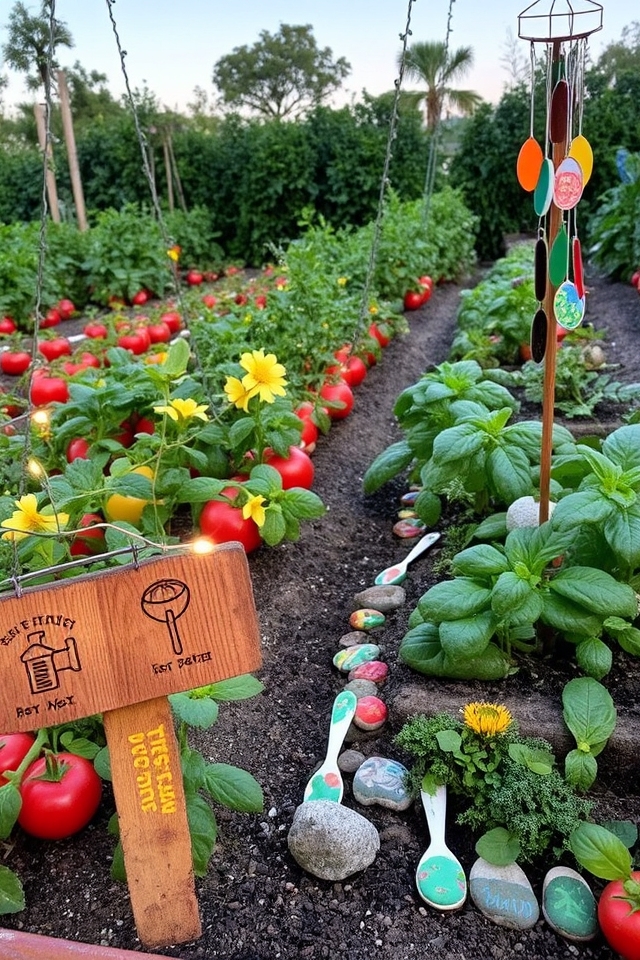
DIY garden decor allows you to infuse your personality into your vegetable garden, making it a unique sanctuary. Consider creating handmade signs to label your veggies or designing colorful garden stakes from repurposed materials. Wind chimes crafted from found objects can add a melodic touch while painted rocks can serve as cheerful borders. Personalizing your space not only enhances its charm but also creates a welcoming atmosphere for you and your visitors. Let your creativity flourish!
Conclusion
So, whether you’re drawn to vertical gardens or captivated by the charm of DIY decor, there’s a world of possibilities waiting for you. Embrace the beauty of seasonal planting while maximizing your space with raised beds or containers. Transform your garden into a vibrant haven where creativity meets productivity. Each idea not only enhances your gardening experience but also inspires you to grow something unique. Immerse yourself, and watch your garden flourish in ways you never imagined!


